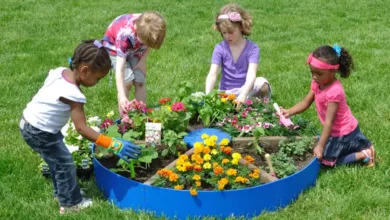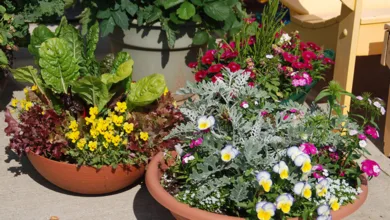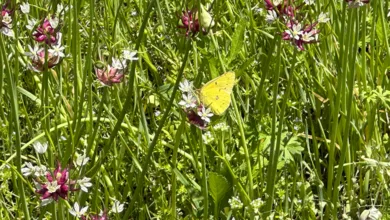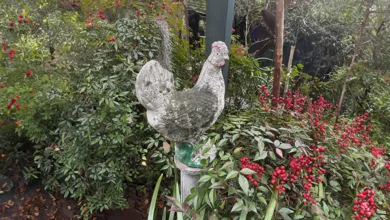Sex in the Garden — A Pollinator’s Dream

Do you know what is going on in most gardens? Pollination: The flowers are having an orgy!
Like all living things, plants’ primary purpose is to reproduce. They do so by producing flowers containing the plant’s sex organs.
At least 85% of flowers need animal sexual aids to help them reproduce, and more than 200 species of animals serve as pollinators when they transport pollen between plants of the same species.
Humans and other mammals can help, but the most frequent pollinators are insects, bats, and birds. And they all do it without even knowing they are helping the plants!
Pollination is like conception. It occurs when the pollen (sperm) penetrates the stigma (female organ) and germinates in the ovary. Many plants have flowers with both male (anthers and pollen) and female (stigmas and ovaries) organs. Some even have separate male and female flowers on the same plant.
Most plants prefer to be pollinated by another plant of the same species and have ways to prevent self-pollination, like having their sex organs active at different times. The stigmas can even detect if a grain of pollen is from its own plant or another and gives priority to the “foreign” pollen.
Once pollination has occurred, the flower can wilt because it has accomplished its goal. At this point, the spent blossom can be deadheaded by pinching or cutting it off. This process will cause the plant to produce another flower and try again. Many gardeners deadhead to keep the plant blooming longer and more prolifically.
The plant world is full of competition, so flowers evolved to attract the pollinators they need. They do this with shape, scent, and food. The more open a flower is, the easier it is for pollinators to land on it; flowers with a cluster of small blooms are easy, too.
Flowers only produce scents if they need it to attract pollinators because it takes a lot of energy to produce the aroma; some of the most fragrant are night bloomers. Hybrid plants developed by human manipulation to be more aromatic, colorful, and compact are reproduced through cuttings rather than seeds because they do not offer pollen and nectar.
Different pollinator species can see distinct parts of the color spectrum, and scientists believe their sight has evolved into seeing the colors that offer the best food for each species.
Bees see yellow, white, blue, purple, and ultraviolet. Hummingbirds see the colors of the red spectrum best, which is why hummingbird feeders are usually red. Many night-blooming flowers are white or light-colored so they’re more visible in the dark for nocturnal pollinators such as moths and bats.
Some flowers also have spots or grooves called nectar guides to help pollinators find hidden sex organs. The yellow centers of pansies are for this purpose, as well as the spots on foxgloves.
Once pollination occurs, some flowers change color to a shade their sexual aides can’t see. Multi-colored lantanas do this, with little clusters of flowers blooming first yellow in the center and then pink, orange, or red.
The food that flowers offer is nectar and pollen. Many pollinators drink the nectar and eat the pollen for nourishment; some take it back to their hive or nest to feed their young. Nectar is a sugary liquid that provides energy, and pollen is a protein. Some flowers offer only one or the other, but most offer both. The nectar is often located so that pollen will rub off when the insect, bird, or bat is drinking and can then be carried to the next plant to rub off on that stigma.
Plants and pollinators need each other to survive, and so do we. About a third of our food depends on pollinators. Please be kind to them and use pesticides only when necessary. You, your garden, and those essential pollinators will all benefit greatly.
Seven Best Pollinator Plants for Your Garden
- Fall Aster
- Flame Acanthus
- Frostweed (like Red Bull to butterflies)
- Gregg’s Mistflower (like Viagra to male butterflies)
- Salvia/Sage
- Turk’s Cap Flower (The hummer is the exclusive pollinator of Turk’s cap. The flower’s pollen rubs off on the forehead of the bird so they can carry it to the next flower and deposit it there.)






